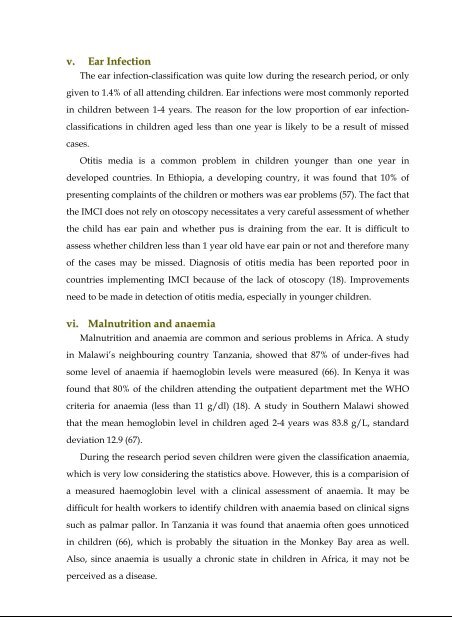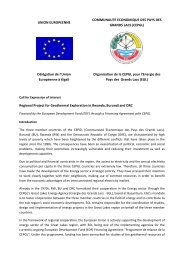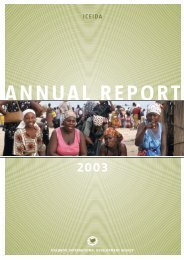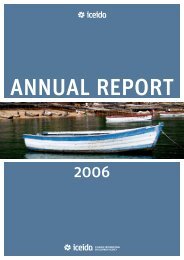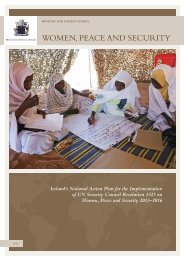The Implementation of Integrated Management of Childhood Illness ...
The Implementation of Integrated Management of Childhood Illness ...
The Implementation of Integrated Management of Childhood Illness ...
You also want an ePaper? Increase the reach of your titles
YUMPU automatically turns print PDFs into web optimized ePapers that Google loves.
v. Ear Infection<br />
<strong>The</strong> ear infection-classification was quite low during the research period, or only<br />
given to 1.4% <strong>of</strong> all attending children. Ear infections were most commonly reported<br />
in children between 1-4 years. <strong>The</strong> reason for the low proportion <strong>of</strong> ear infectionclassifications<br />
in children aged less than one year is likely to be a result <strong>of</strong> missed<br />
cases.<br />
Otitis media is a common problem in children younger than one year in<br />
developed countries. In Ethiopia, a developing country, it was found that 10% <strong>of</strong><br />
presenting complaints <strong>of</strong> the children or mothers was ear problems (57). <strong>The</strong> fact that<br />
the IMCI does not rely on otoscopy necessitates a very careful assessment <strong>of</strong> whether<br />
the child has ear pain and whether pus is draining from the ear. It is difficult to<br />
assess whether children less than 1 year old have ear pain or not and therefore many<br />
<strong>of</strong> the cases may be missed. Diagnosis <strong>of</strong> otitis media has been reported poor in<br />
countries implementing IMCI because <strong>of</strong> the lack <strong>of</strong> otoscopy (18). Improvements<br />
need to be made in detection <strong>of</strong> otitis media, especially in younger children.<br />
vi. Malnutrition and anaemiaa<br />
Malnutrition and anaemia are common and serious problems in Africa. A study<br />
in Malawi’s neighbouring country Tanzania, showed that 87% <strong>of</strong> under-fives had<br />
some level <strong>of</strong> anaemia if haemoglobin levels were measured (66). In Kenya it was<br />
found that 80% <strong>of</strong> the children attending the outpatient department met the WHO<br />
criteria for anaemia (less than 11 g/dl) (18). A study in Southern Malawi showed<br />
that the mean hemoglobin level in children aged 2-4 years was 83.8 g/L, standard<br />
deviation 12.9 (67).<br />
During the research period seven children were given the classification anaemia,<br />
which is very low considering the statistics above. However, this is a comparision <strong>of</strong><br />
a measured haemoglobin level with a clinical assessment <strong>of</strong> anaemia. It may be<br />
difficult for health workers to identify children with anaemia based on clinical signs<br />
such as palmar pallor. In Tanzania it was found that anaemia <strong>of</strong>ten goes unnoticed<br />
in children (66), which is probably the situation in the Monkey Bay area as well.<br />
Also, since anaemia is usually a chronic state in children in Africa, it may not be<br />
perceived as a disease.<br />
46


